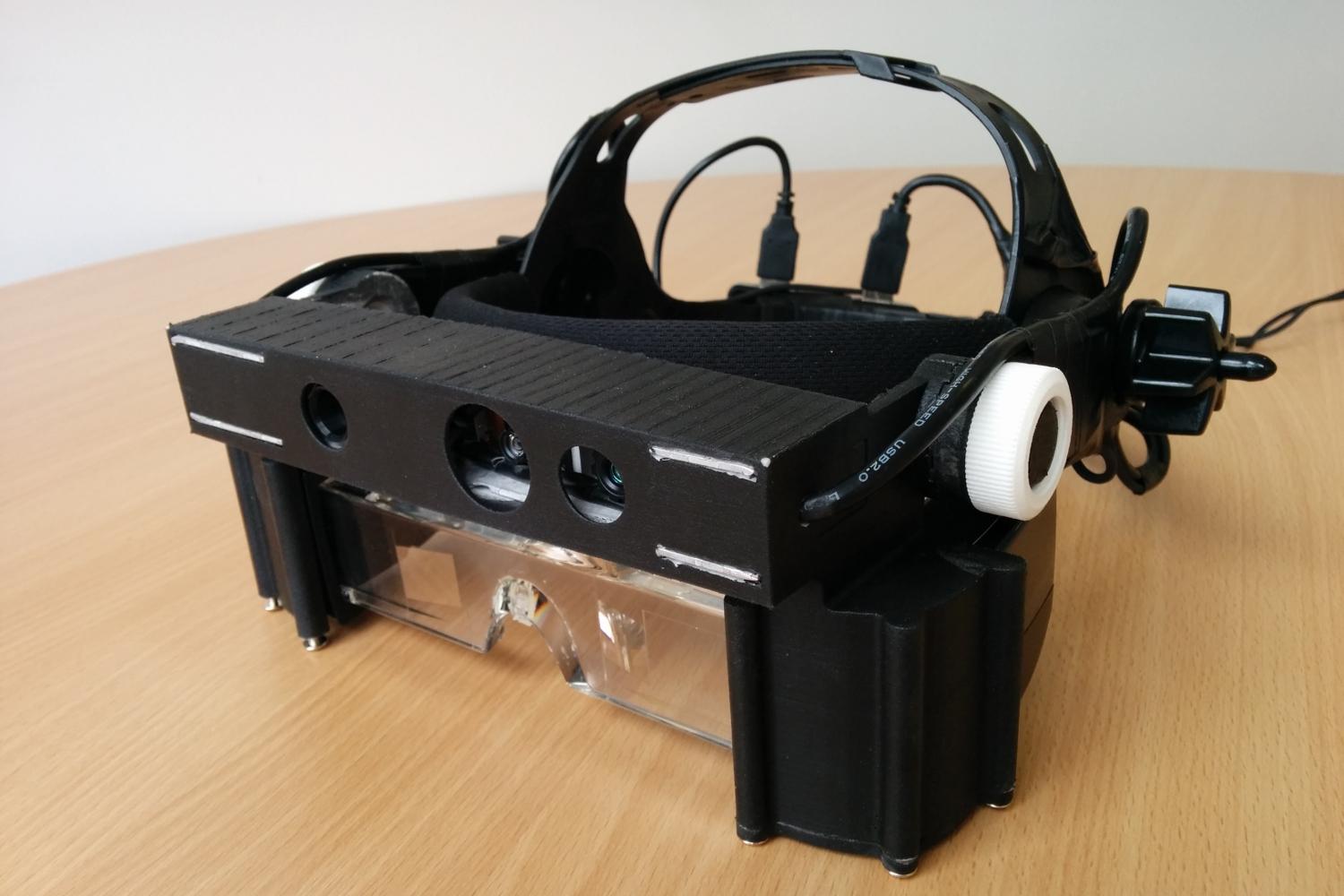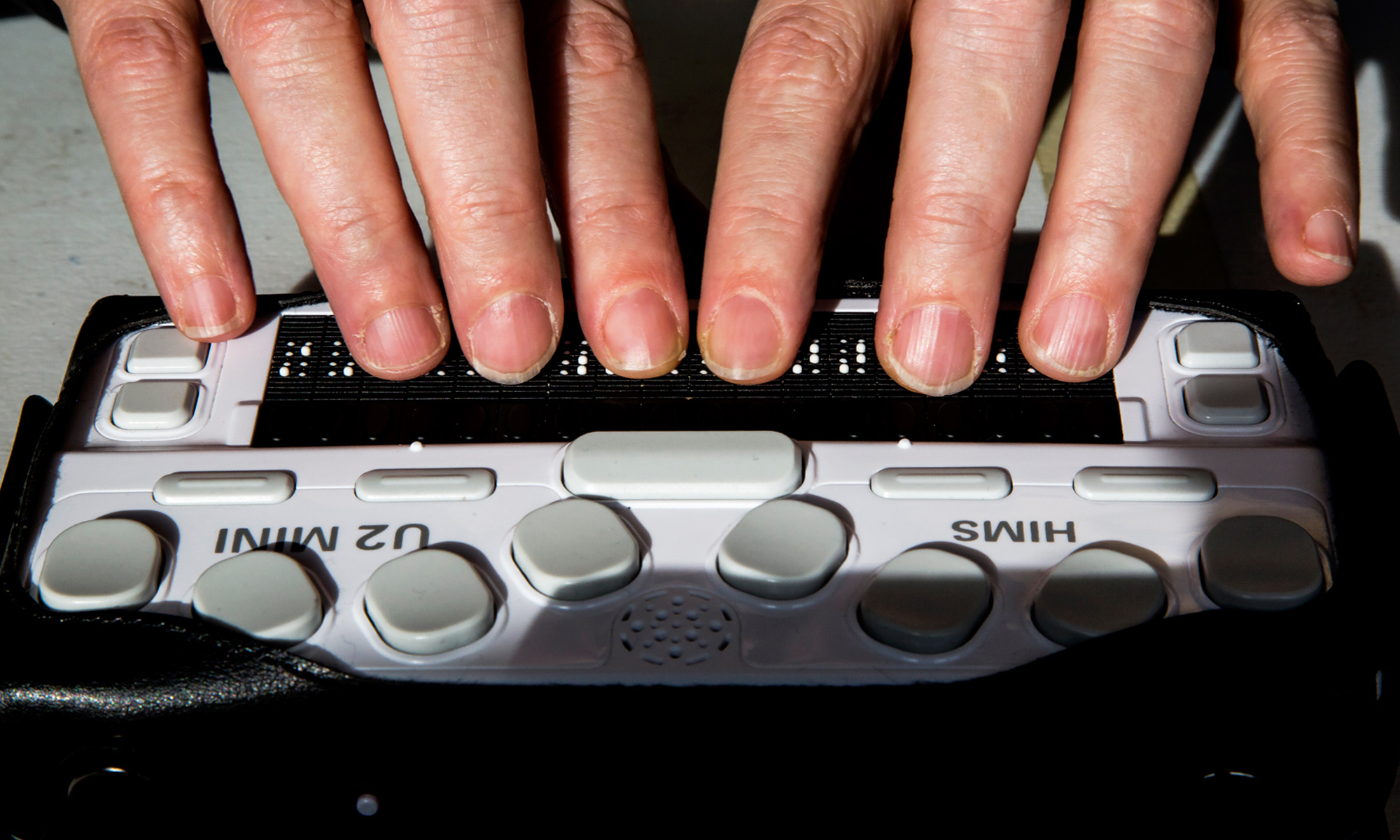Discover Innovative Tools Created for the Visually Damaged
The development of innovative devices for the aesthetically impaired represents a significant advancement in ease of access and independence. Technologies such as smart glasses with AI capabilities and mobile applications made to give acoustic descriptions are improving everyday experiences for individuals. In addition, wearable gadgets that employ haptic feedback improve environmental awareness, while contemporary Braille developments offer brand-new means to engage with message. As these devices remain to evolve, their effect on the lives of those with aesthetic disabilities increases crucial inquiries regarding the future of inclusivity and freedom in various elements of life. What lies in advance in this technological landscape?
Smart Glasses for Navigating

Smart glasses created for navigating are reinventing the way aesthetically damaged individuals communicate with their setting. These innovative gadgets make use of a combination of camera innovation, expert system, and auditory responses to give real-time information concerning environments. By employing obstacle detection systems, wise glasses can alert individuals to prospective risks, making it possible for more secure wheelchair in both acquainted and unknown setups.
The combination of GPS modern technology better improves navigating capabilities, permitting customers to get auditory directions as they move. This hands-free approach not only promotes self-reliance yet likewise equips aesthetically impaired individuals to browse urban landscapes with enhanced self-confidence. Additionally, numerous smart glasses are outfitted with attributes that determine spots and road signs, offering contextual info that boosts the customer experience.
Moreover, the growth of these gadgets is continually progressing, with business working to boost the accuracy of object acknowledgment and broaden the series of navigational features. As clever glasses come to be much more cost effective and easily accessible, they hold the prospective to significantly change life for visually damaged customers. Ultimately, these cutting-edge tools represent a crucial step toward inclusivity, offering enhanced wheelchair and a greater sense of freedom for people browsing the world around them.

Mobile Apps for Daily Living
How can mobile applications enhance the every day lives of aesthetically damaged individuals? Mobile apps are transforming the means aesthetically impaired customers browse their environments, handle day-to-day tasks, and gain access to details. These applications supply crucial assistance with numerous capabilities, cultivating independence and enhancing top quality of life.
Several innovative mobile applications are made specifically for daily living. As an example, apps like Be My Eyes attach aesthetically damaged users with sighted volunteers by means of video phone calls, allowing them to obtain real-time assistance with tasks such as reading labels or navigating unfamiliar spaces. Seeing AI, created by Microsoft, uses artificial intelligence to define environments, checked out message, and determine items, successfully transforming a smartphone into a powerful tool for daily assistance.
Furthermore, navigating apps tailored for the visually damaged, such as Aira and BlindSquare, offer audio-based instructions and environmental details, enabling customers to traverse their surroundings safely and confidently. Past navigation and prompt aid, mobile apps additionally support company and task administration, with attributes that assist users set tips, create to-do checklists, and track visits. In summary, mobile applications function as essential sources, equipping visually damaged individuals to lead even more independent and satisfying lives.
Wearable Technologies for Help
Empowerment with technology is progressively evident in the world of wearable devices developed to aid aesthetically impaired individuals. These cutting-edge tools integrate flawlessly into daily life, enhancing navigating and giving necessary comments to customers. Smart glasses furnished with electronic cameras can identify faces and check out text out loud, permitting users to interact even more with confidence in social and professional settings.
Another noteworthy improvement is using haptic responses systems in wearable tools. These systems use resonances or various other responsive signals to communicate info regarding the user's setting, such as barriers or adjustments in terrain, enhancing wheelchair and safety and security. Wearable modern technologies additionally consist of wristbands that connect to smartphones, alerting individuals to notifications via refined vibrations, hence boosting connection without reliance on aesthetic hints.
As these innovations continue to progress, they are not only enhancing freedom for aesthetically damaged individuals but additionally promoting a better feeling of incorporation in culture. By linking the void between difficulties dealt with in day-to-day living and the capacity for autonomy, wearable innovations function as crucial devices in the mission for equality and empowerment for those with visual disabilities.
Audio Summary Tools
Audio summary tools play an essential function in enhancing accessibility for aesthetically impaired people, providing them with the capacity to involve with visual media. AI-powered visual aids. These tools supply narrated summaries of crucial visual read the full info here aspects in movies, tv programs, and live performances, guaranteeing that customers can totally understand the context and feelings conveyed via visuals
Audio description can be integrated right into different systems, including streaming solutions, movie theater testings, and live theater. Lots of popular streaming solutions now consist of audio summary as an accessibility attribute, allowing customers to choose it conveniently. In addition to traditional media, specialized applications also exist, supplying audio summaries for art exhibitions, galleries, and various other cultural events.
The performance of audio summary depends upon the skill of the storytellers, that should share aesthetic information succinctly without diminishing the original sound. Advancements in this field are likewise leading the means for even more individualized experiences, where customers can change the degree of information and pacing according to their choices.
Braille Innovations and Devices
Braille technologies and gadgets have significantly changed the way aesthetically damaged individuals interact with text and info. Modern advancements have actually brought about the growth of flexible devices that improve literacy and freedom among users. Notably, Braille show technologies have advanced, permitting for dynamic analysis experiences. These tools transform digital text into Braille, enabling individuals to access a substantial range of info on computer systems, smartphones, and tablets.
Additionally, mobile Braille notetakers integrate typical Braille input with contemporary performances, promoting note-taking, organizing, and record modifying on the go. Smart glasses for the visually impaired. These small tools usually include text-to-speech abilities, connecting the void in between Braille and auditory details
Furthermore, cutting-edge Braille printers have actually arised, allowing customers to generate Braille tags, documents, and academic materials successfully. This availability cultivates better involvement in educational and expert settings, ultimately advertising inclusivity.
In addition, research study right into clever Braille innovations remains to oculista near me increase. Instruments that integrate synthetic knowledge are being explored to give real-time navigation assistance and contextual details, boosting the individual experience in varied setups. Overall, these innovations show a commitment to encouraging aesthetically impaired people with innovation, ensuring they can quickly access and involve with the globe around them.

Final Thought
The development of ingenious devices for the visually damaged substantially improves independence and high quality of life. These technologies not just foster better addition yet also advertise autonomy in day-to-day activities, eventually adding to a more fair and obtainable society for aesthetically damaged individuals.
As smart glasses come to be more budget-friendly and accessible, they hold the prospective to substantially transform day-to-day life special info for aesthetically impaired customers. Mobile applications are revolutionizing the method aesthetically impaired customers browse their environments, take care of day-to-day jobs, and access information. Apps like Be My Eyes connect visually impaired individuals with sighted volunteers via video clip telephone calls, allowing them to obtain real-time support with jobs such as reading labels or navigating unfamiliar spaces.Additionally, navigation apps customized for the aesthetically damaged, such as Aira and BlindSquare, offer audio-based instructions and ecological info, allowing users to traverse their surroundings safely and confidently.The development of innovative tools for the visually impaired considerably boosts freedom and top quality of life.